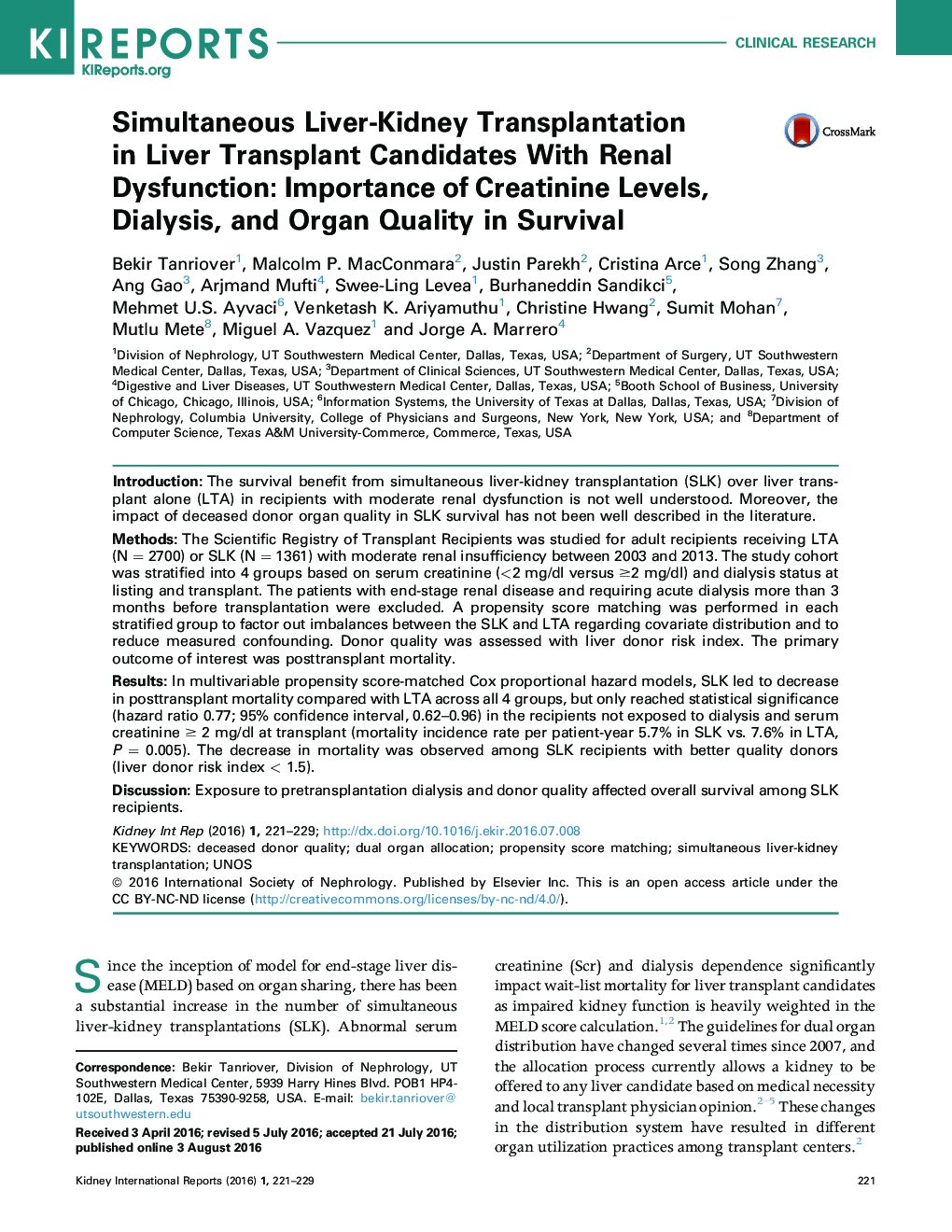| Article ID | Journal | Published Year | Pages | File Type |
|---|---|---|---|---|
| 5689581 | Kidney International Reports | 2016 | 9 Pages |
IntroductionThe survival benefit from simultaneous liver-kidney transplantation (SLK) over liver transplant alone (LTA) in recipients with moderate renal dysfunction is not well understood. Moreover, the impact of deceased donor organ quality in SLK survival has not been well described in the literature.MethodsThe Scientific Registry of Transplant Recipients was studied for adult recipients receiving LTA (N = 2700) or SLK (N = 1361) with moderate renal insufficiency between 2003 and 2013. The study cohort was stratified into 4 groups based on serum creatinine (<2 mg/dl versus â¥2 mg/dl) and dialysis status at listing and transplant. The patients with end-stage renal disease and requiring acute dialysis more than 3 months before transplantation were excluded. A propensity score matching was performed in each stratified group to factor out imbalances between the SLK and LTA regarding covariate distribution and to reduce measured confounding. Donor quality was assessed with liver donor risk index. The primary outcome of interest was posttransplant mortality.ResultsIn multivariable propensity score-matched Cox proportional hazard models, SLK led to decrease in posttransplant mortality compared with LTA across all 4 groups, but only reached statistical significance (hazard ratio 0.77; 95% confidence interval, 0.62-0.96) in the recipients not exposed to dialysis and serum creatinine ⥠2 mg/dl at transplant (mortality incidence rate per patient-year 5.7% in SLK vs. 7.6% in LTA, P = 0.005). The decrease in mortality was observed among SLK recipients with better quality donors (liver donor risk index < 1.5).DiscussionExposure to pretransplantation dialysis and donor quality affected overall survival among SLK recipients.
